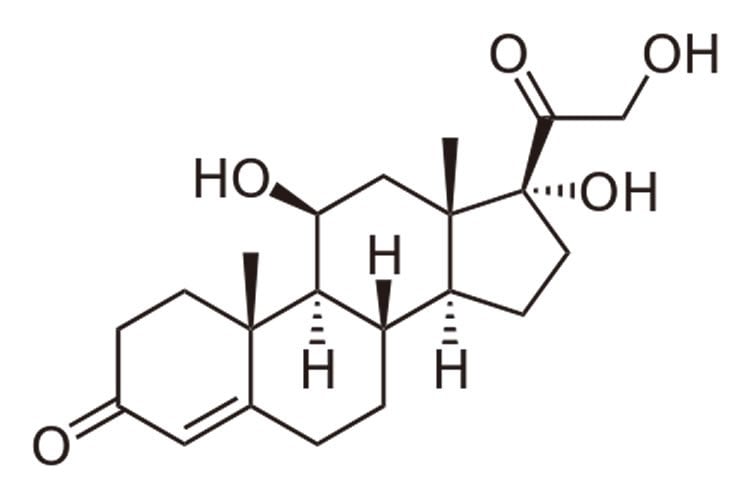Summary: Stressed adults who report high-stress exposure as children have altered cortisol levels associated with negative health outcomes. Findings suggest early life stress may calibrate the stress response system in the brain, with health consequences that last into adulthood.
Source: APS
Adults who report high levels of stress and who also had stressful childhoods are most likely to show hormone patterns associated with negative health outcomes, according to findings published in Psychological Science.
One of the ways that our brain responds to daily stressors is by releasing a hormone called cortisol — typically, our cortisol levels peak in the morning and gradually decline throughout the day. But sometimes this system can become dysregulated, resulting in a flatter cortisol pattern that is associated with negative health outcomes.
“What we find is that the amount of a person’s exposure to early life stress plays an important role in the development of unhealthy patterns of cortisol release. However, this is only true if individuals also are experiencing higher levels of current stress, indicating that the combination of higher early life stress and higher current life stress leads to the most unhealthy cortisol profiles,” says psychological scientist Ethan Young, a researcher at the University of Minnesota.
For the study, Young and colleagues examined data from 90 individuals who were part of a high-risk birth cohort participating in the Minnesota Longitudinal Study of Risk and Adaptation.
The researchers specifically wanted to understand how stressful events affect the brain’s stress-response system later in life. Is it the total amount of stress experienced across the lifespan that matters? Or does exposure to stress during sensitive periods of development, specifically in early childhood, have the biggest impact?
Young and colleagues wanted to investigate a third possibility: Early childhood stress makes our stress-response system more sensitive to stressors that emerge later in life.
The researchers assessed data from the Life Events Schedule (LES), which surveys individuals’ stressful life events, including financial trouble, relationship problems, and physical danger and mortality. Trained coders rate the level of disruption of each event on a scale from 0 to 3 to create an overall score for that measurement period. The participants’ mothers completed the interview when the participants were 12, 18, 30, 42, 48, 54, and 64 months old; when they were in Grades 1, 2, 3, and 6; and when they were 16 and 17 years old. The participants completed the LES themselves when they were 23, 26, 28, 32, 34, and 37 years old.
The researchers grouped participants’ LES scores into specific periods: early childhood (1-5 years), middle childhood (Grades 1-6), adolescence (16 and 17 years), early adulthood (23-34 years), and current (37 years).
At age 37, the participants also provided daily cortisol data over a 2-day period. They collected a saliva sample immediately when they woke up and again 30 minutes and 1 hour later; they also took samples in the afternoon and before going to bed. They sent the saliva samples to a lab for cortisol-level testing.
The researchers found that neither total life stress nor early childhood stress predicted cortisol level patterns at age 37. Rather, cortisol patterns depended on both early childhood stress and stress at age 37. Participants who experienced relatively low levels of stress in early childhood showed relatively similar cortisol patterns regardless of their stress level in adulthood. On the other hand, participants who had been exposed to relatively high levels of early childhood stress showed flatter daily cortisol patterns, but only if they also reported high levels of stress as adults.
The researchers also investigated whether life stress in middle childhood, adolescence, and early adulthood were associated with adult cortisol patterns, and found no meaningful relationships.
These findings suggest that early childhood may be a particularly sensitive time in which stressful life events — such as those related to trauma or poverty — can calibrate the brain’s stress-response system, with health consequences that last into adulthood.

Young and colleagues note that cortisol is one part of the human stress-response system, and they hope to investigate how other components, such as the microbiome in our gut, also play a role in long-term health outcomes.
Funding: This project was supported by a National Institute on Aging grant (No. R01 AG039453) awarded to J. A. Simpson, which supported the most recent assessments of the Minnesota Longitudinal Study of Risk and Adaptation.
Source:
APS
Media Contacts:
Anna Mikulak – APS
Image Source:
The image is in the public domain.
Original Research: Closed access
“The Dual Impact of Early and Concurrent Life Stress on Adults’ Diurnal Cortisol Patterns: A Prospective Study”
Ethan S. Young, Allison K. Farrell, Elizabeth A. Carlson, Michelle M. Englund, Gregory E. Miller, Megan R. Gunnar, Glenn I. Roisman, Jeffry A. Simpson. Psychological Science Published March 8 2019. doi:10.1177/0956797619833664
Abstract
The Dual Impact of Early and Concurrent Life Stress on Adults’ Diurnal Cortisol Patterns: A Prospective Study
Major life stress often produces a flat diurnal cortisol slope, an indicator of potential long-term health problems. Exposure to stress early in childhood or the accumulation of stress across the life span may be responsible for this pattern. However, the relative impact of life stress at different life stages on diurnal cortisol is unknown. Using a longitudinal sample of adults followed from birth, we examined three models of the effect of stress exposure on diurnal cortisol: the cumulative model, the biological-embedding model, and the sensitization model. As its name implies, the cumulative model focuses on cumulative life stress. In contrast, the biological-embedding model implicates early childhood stress, and the sensitization model posits that current life stress interacts with early life stress to produce flat diurnal cortisol slopes. Our analyses are consistent with the sensitization model, as they indicate that the combination of high-stress exposure early in life and high current stress predict flat diurnal cortisol slopes. These novel findings advance understanding of diurnal cortisol patterns and point to avenues for intervention.






